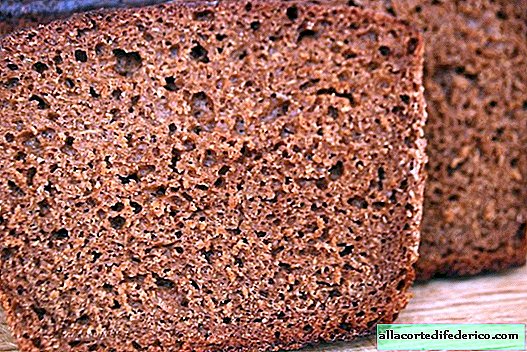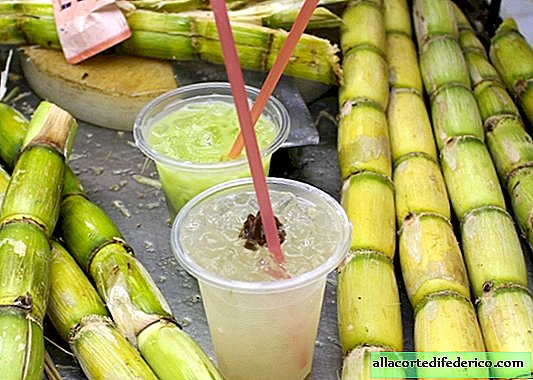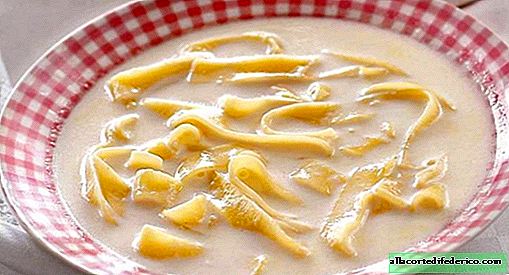What foods are most lacking for Russians far from their homeland?
What is the expression of homesickness among middle-aged immigrants? In such cases, when everything new has become familiar, and everything old acquires nostalgic features ... Places of childhood, parents, friends ... It is clear that without this it is difficult, but most of all emigrants miss the usual food.
Thank God, the food is now as international as the people, but finding condensed milk in a small town in South America is no easier than an African American in the village of "Far Swamps". Moreover, authentic food is prohibitive, and close to the native does not bring gastronomic bliss.
So what to stock up when you are going to visit friends who live across the oceans?
Black (rye) bread

Almost all emigrants note that abroad it is difficult to find bread of any color that would not resemble foamed cotton wool in consistency and taste. The progress and the technology of rapid ripening are to blame for everything, in which the product quickly cooks, does not stale, has a uniform consistency. The lack of taste with all these advantages seems such a trifle.
Buckwheat

In the West, buckwheat is not respected and treated as an exotic and strange dish. In many countries they have not even heard of her! Well, we consider buckwheat to be a useful and tasty, truly Russian dish. Although in fact she came to us from the Himalayas, where she was called black rice.
Drying with poppy seeds

Circle-shaped bread is the creative impulse of an unknown Jewish baker. With the resettlement of the Jews, the recipe spread. In each country, it changed and changed from a donut to a dryer, bagels, stolen, bagels, pretzels. Russian drying is an ideal product! Light (convenient to take with you), compact (exactly one bite), and of course, very tasty with a tea-coffee maker. But in America, only her brother took root - the softest bagel, sprinkled with sesame seeds and stuffed with salmon, cream cheese or chocolate.
Cottage cheese

In Western culture there is no such cottage cheese. They have a young unripe cheese, which may be called a "village" cheese. Accordingly, either salt is added to it, or a sweet paste is made from it. Of course, you can find real cottage cheese, but in order to find a real milky taste and a grainy texture, you have to try.
Berries

Of course, there are berries abroad. Aesthetic huge strawberries and blackberries are sold everywhere. But currants, gooseberries, strawberries are easy to find only in the form of flavorings.
Dried fish

This is an absolutely unthinkable snack from the point of view of foreigners. Dry, salty, hard and with bones. Tear off your skin, get your hands dirty - how crazy is that? And we like it! Matter of habit!
Mustard

Well, of course, mustard is a product known in almost every country. But in Europe and America there was only a faint taste of mustard, it is quite possible to spread it with a thick layer and eat, smiling intelligently.
Homemade Pickles

Somewhere in August, in every family, water began to boil, endless jars of cucumbers, tomatoes, and zucchini were poured. Endless lecho and salads were stacked in cans. I must say that not only emigrants miss these pickles!
Butterscotch

There is also iris abroad, but its taste is not the same ... In many ways, it is even tastier, “more sophisticated”, with chocolate and other additives. But the Russians miss the “Golden Key” and “Kitty-kitty”.
Doctor's sausage

Doctoral sausage was created immediately after the revolution. They called it “Doctor's” because it was called upon to improve the health of Soviet citizens, undermined during the struggle against tsarist despotism. It consisted of beef and pork, eggs and milk and no sodium glutamate. Smoked and dried sausages or sausages are held in high esteem abroad.
Kefir and sour cream

In Europe, the South Asian countries and the USA, there are few fermented milk products. In Europe and America, these are mostly low-fat yogurts, sweet and savory. They say there is buttermilk, but how much do they have in common?
Mushrooms

In every country there are mushrooms, and they are eaten almost everywhere. But in each country certain species are considered edible, which confirms the theory that all mushrooms are "conditionally" edible, and in other words, poisonous to one degree or another. For example, beloved lovers in Russia are considered inedible in Europe. The French recognize truffles exclusively, and the British recognize champignons. In America, it’s not generally accepted to pick mushrooms in the forests.
Halva

She came to Russia from Iran and took root. Sugar and seeds are so simple that it seems like this product is everywhere. Yes, there is halva in any country, it is so different and tasty: pistachio and peanut, tahini and from a mixture of nuts. Cocoa and chocolate, vanilla and cream are added to it. It is difficult to find ordinary sunflower halva, as in childhood.
Sauerkraut

This product is not found in South America and Australia, but it can be easily found in Germany, where sauerkraut is also considered a national dish. What about bigos? Have you tried stewing sauerkraut with meat and prunes, as they do in Hungary? Hungarians and Poles highly recommend this business!
Stew

Is it hard to find a stew abroad? No ... but Russian GOST is very difficult!
Jam

In Europe and America they prefer jams and jams. They do not like liquid syrup with floating berries, because it is not convenient to spread on toasted toast. And we love!
Herring

In many countries, herring is marinated with sugar or honey. Even if the herring is uniquely salty, the recipe for the ambassador differs from country to country. The Russian soul requires fatty, slightly salted herring. Here we want to put onion and butter in it, and boil potatoes for it ...

















